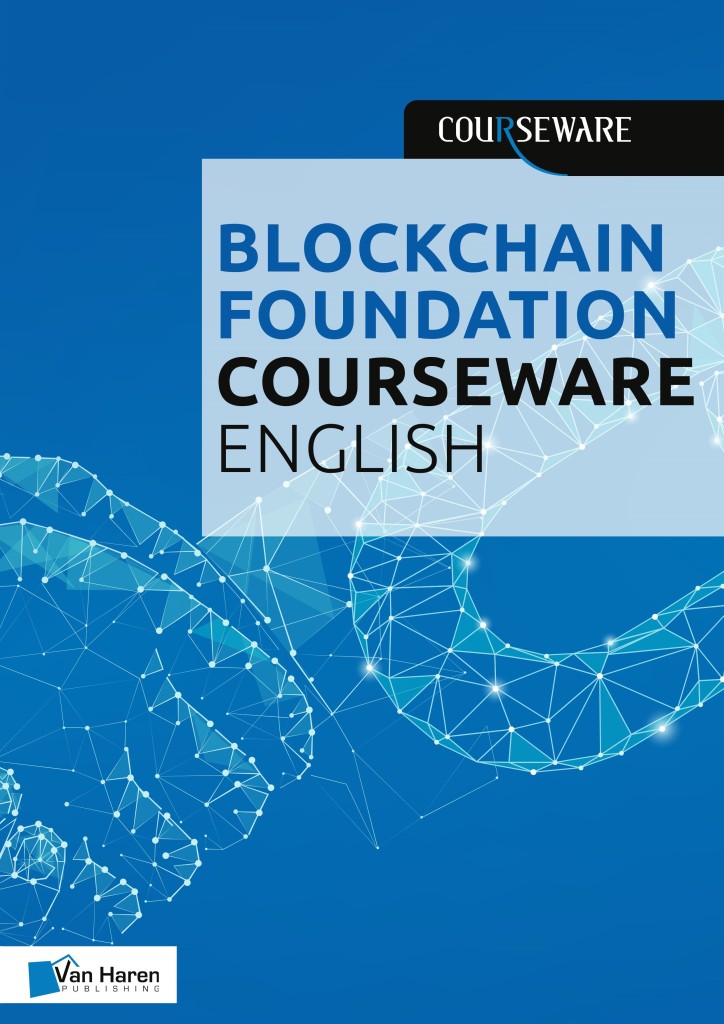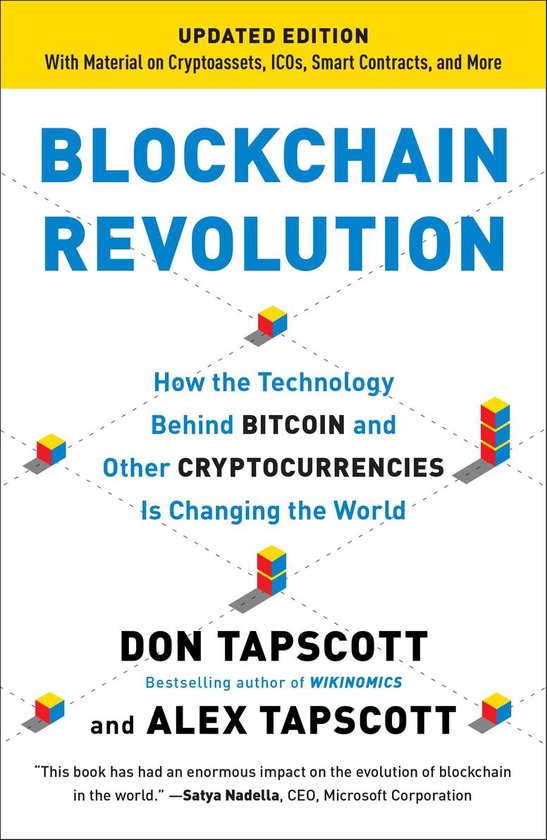
Quite often you hear the words blockchain, bitcoin or cryptocurrency, but do you really know what is meant with those words? Tiana Laurence wrote the book Introduction to Blockchain Technology – The many faces of blockchain technology in the 21st century to demystify these words.
The book is divided into 10 chapters. In the first three chapters you get an introduction to blockchain technology by explaining a blockchain, nodes, cryptocurrency, tokens, the meaning of distributed, and key parts of blockchain technology like cryptography, hash, ledgers, public witness and different consensus algorithms and structures of the network.
It all started with Satoshi Nakamoto. Satoshi is the pseudonym of the person or people who developed the bitcoin white paper (2008) and implemented the first blockchain database including the bitcoin. At this moment it is still not known who is behind this Satoshi. Satoshi left the blockchain scene in December 2010. A blockchain is a peer-to-peer distributed timestamp server that holds a record of all transactions that have ever occurred on that network. Blockchain technology may be applied in areas where a middleman is needed to facilitate trust. Trust is essential for things such as the transfer of money, voting, land records, IP rights, and identity. Blockchain software can be programmed to take the place of the middleman by becoming the trusted record keeping system.
Some used terminology within the blockchain technology:
- A node is a computer that is connected to a blockchain network. It runs the software for the network and keeps the network healthy by transferring information across the network to other nodes.
- A hash function is used to secure all the data in a block of transactions. A hash is the output of this mathematical process that creates a string of numbers and letters of a fixed size; for bitcoin it is 32 bytes.
- Public blockchains are open to anyone in the world to participate in the functions of the network, only limited by their access to the internet, hardware and electricity.
- Privat blockchains only allow trusted parties to operate their blockchain.
- Hybrid blockchains control who can participate and at what level of participation each node is allowed to operate.
- A common way to connect to a blockchain network is to mine. A miner is a type of node that is adding transactions to new blocks. Miners compete to win the right to create a new complete block by solving a complex mathematical problem. Each miner will write their answer in the block header and if they are correct, they are then rewarded with cryptocurrency. Mining does three things: creating new cryptocurrency, confirming transactions and securing the blockchain history.
- A cryptocurrency is a type of digital cash and is a bearer instrument.
- Not all blockchain networks have cryptocurrency, but all networks allow for the issuance of some kind of token. Tokens are flexible and may not be bearer instrument. Tokens are self-authenticating data packets and represent a rare digital bit of information.
- Ledger is a general term for describing records used to account for something and ‘distributed’ means that the record is kept in more than one location.
- Blockchain technology is an extension of public witness concept (A public witness is a person that is attesting to a fact or event) in that it spreads knowledge, encourages persistence of information, and allows each individual node to make a choice with the information that they are given. Primary use cases of blockchain technology are tokenization, digital identity, transfer of value and decentralized applications.
- Cryptography is the encryption of data so that it is only known by the intended parties. Blockchains use asymmetric encryption (public-key cryptography), to secure the transfer of cryptocurrency from one address (public-key) to another. A private key lets you decode messages sent to you over public channels. A public key allows anyone to send you a private message over a public channel.
A consensus algorithm is a code that governs how a blockchain operates. It sets the rules that all participants must follow to proceed transactions. Consensus algorithms create a network structure and process that allows a group of independent systems to agree on a single version of the truth. Different types of consensus algorithms are:
- Proof of Work
- Proof of Stake
- Delegated Proof of Stake
- Proof of Authority
- Proof of Elapsed Time
- Proof of Capacity and Proof of Space
- Proof of Burn
- Hyperledger Fabric

The chapters 4 to 9 explains the many faces of blockchain. First you get insights into the key blockchain networks and technologies like Bitcoin, Hyperledger and Ethereum. Next you get different second-generation applications of blockchain technology like Smart contracts, tokens and decentralized autonomous Organizations (DAO). In the following chapters the author shows what can happen next if you combine these applications with online or protected identity, IoT, AI or marketplaces. How can blockchain influence the world economy by looking at supply chain, cross-border money transfer and financial change agents. In line with the previous chapter you get an overview of new frontiers in blockchain and business e.g. digital fiat currency, disrupters in banking, blockchain and insurance and an explanation of intellectual property rights and providence. The last chapter focusses on blockchain and people by looking at Estonia’s e-Residency and (smart city) projects in China and the financial capitals of the world.
- Distributed ledger technology (DLT) is categorized within the blockchain technology but has three fundamentally distinct differences. There is no cryptocurrency, the nodes are known (private network) and the development is directed.
- A smart contract acts as an online contract between two or more parties. A smart contract is created by developers and enforced with Boolean logic, mathematics, and encryption. Smart contracts have automated performance and verification. The code in the contract would execute once a pre-specified action or event occurred.
- Decentralized applications (DApps) are applications that run on a peer-to-peer network instead of a single system. DApps can be tools, programs, games, and more that connect users and provide directly. DApps expand smart contracts beyond simple A-to-B value transfers.
- Decentralized Autonomous Organizations (DAOs) are sophisticated smart contracts that have things like voting rights of members.
- A decentralized marketplace is a peer-to-peer platform that allows buyers and sellers to interact directly without involving a third party. A centralized marketplace is a platform with central authority.
- Digital fiat currencies are a digital representation of the country’s fiat currency, which will be backed by financial reserves of the country such as forex and gold.
The last chapter of the book is dedicated to vulnerabilities, community fractures and feuds, attacks, hacks, and fraud and scams. Both private and public blockchains can be manipulated and trusting blindly may well lead to disaster.
Conclusion. The book gives a good overview of the blockchain technology, but it is difficult to read. The concepts discussed in the first chapters are key and could use some more explanation. In line with the title – The many faces of … there are many examples of different blockchain systems and applications. A little bit too much I would say. The book is also mandatory reading for the EXIN Blockchain Foundation certification. At the end of each chapter you get some sample exam questions to test your own knowledge. I missed a glossary at the end and that could be beneficial to candidates too.
To order Introduction to Blockchain Technology: managementboek.nl, bol.com, Amazon

Review Blockchain Foundation Courseware
The Blockchain Foundation courseware book is created by Expo Luppes. It contains a copy of the complete Blockchain foundation slide deck, one EXIN sample exam including the rationale and the Preparation Guide EXIN Blockchain Foundation. If I look at the slide deck, I would expect the same figures as been used in the book but that’s not the case. Could be an advantage but for those who want to get the certification it could be confusing too. The set-up of the deck is more or less in line with the chapters of the book. In the slide deck you will get an extensive list of addition reading (mostly web pages).
To order Blockchain Foundation Courseware: Van Haren Publishing
Additional reading
Satoshi Nakamoto, A peer-to-peer electronic cash system, retrieved from https://bitcoin.org/bitcoin.pdf

Klaus Schwab, The fourth Industrial Revolution
To order: managementboek.nl, bol.com, Amazon

Don Tapscott and Alex Tapscott, Blockchain revolution: How the technology behind Bitcoin is changing money, business, and the world:
To order: managementboek.nl, bol.com, Amazon

















Pingback: Quick Reference Cards in 2020 | Henny Portman's Blog
Pingback: Overview of my year 2020 book reviews | Henny Portman's Blog
Hello , your blog is informative and very help full for beginners , thank you for sharing it .
Hiiii….Thanks for sharing Great info…Nice post…Keep move on. We are also working in the same technologies.
Blockchain Consulting Services
Hope it might be helpful for you & Keep Share you valuable view about the blog into the comment section.